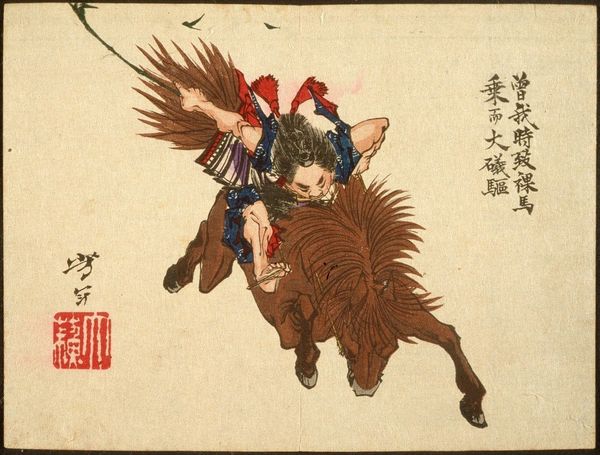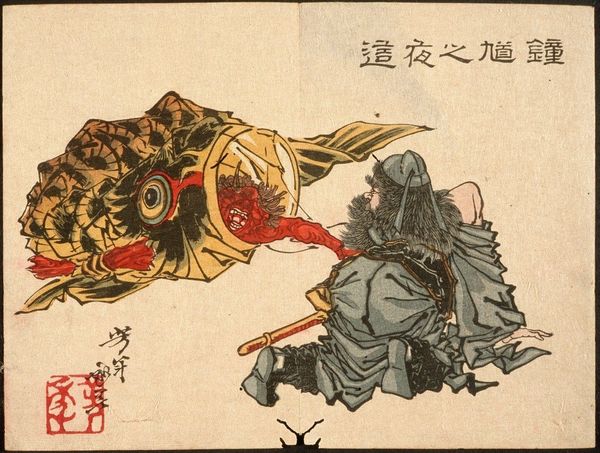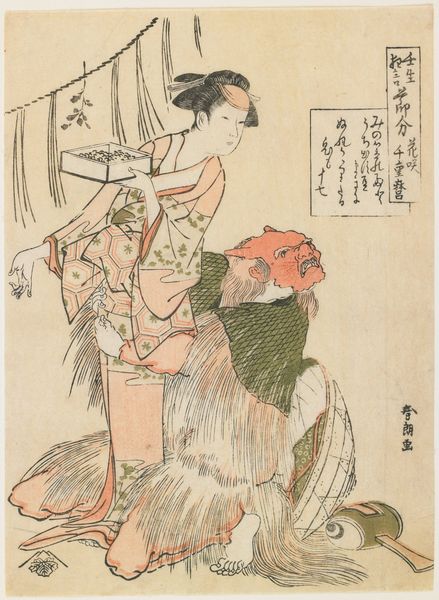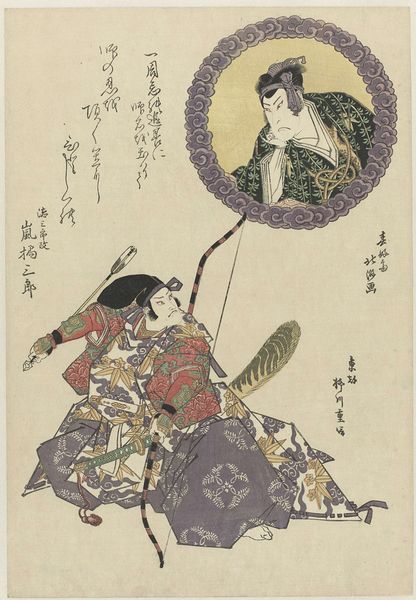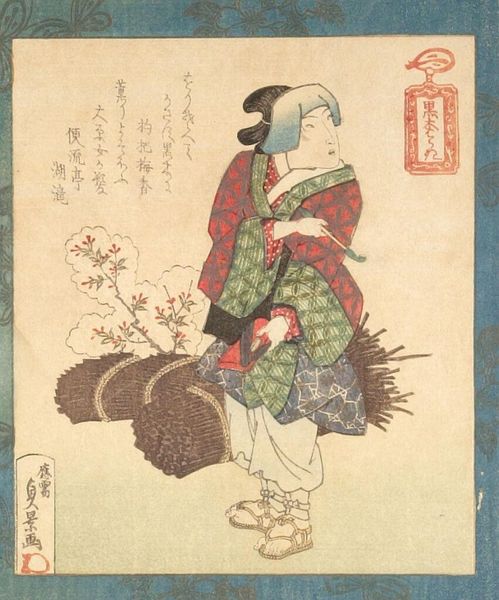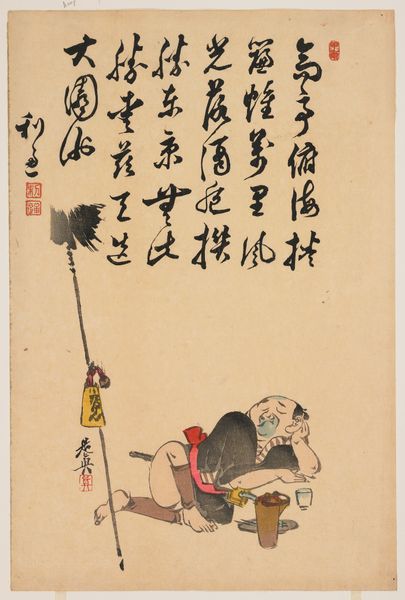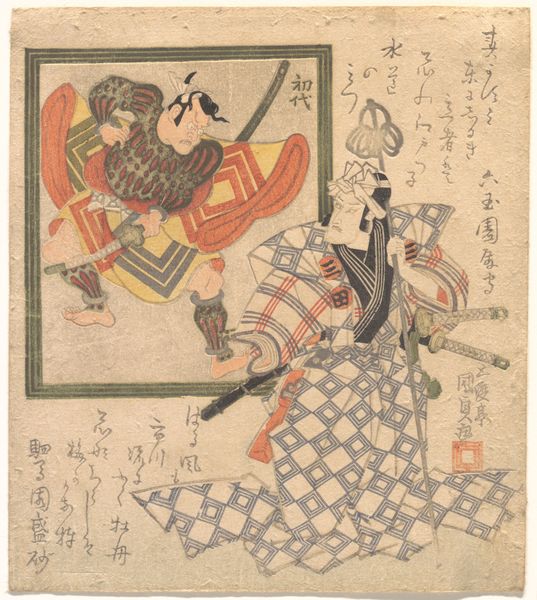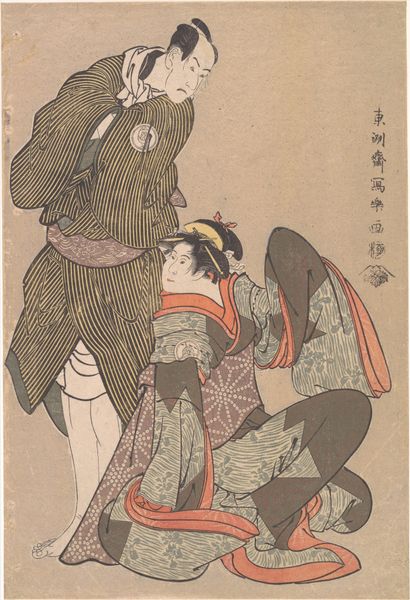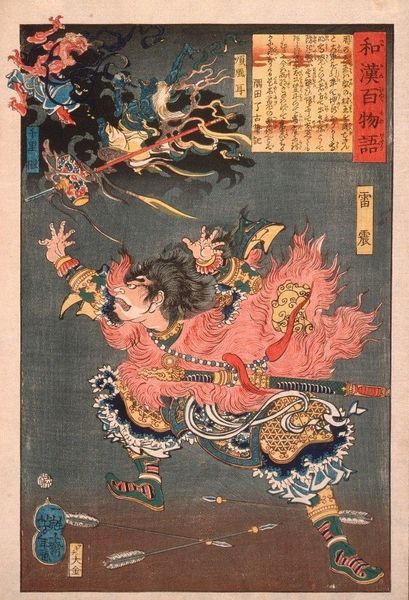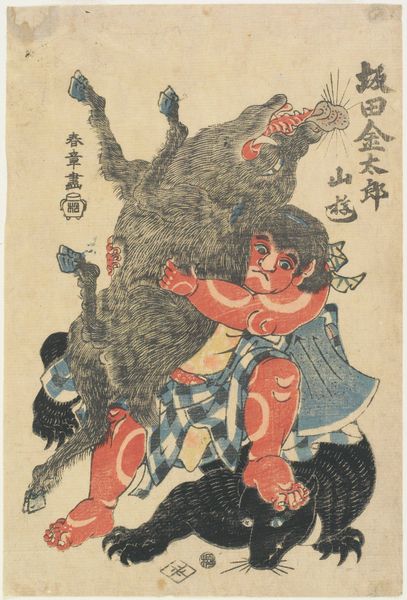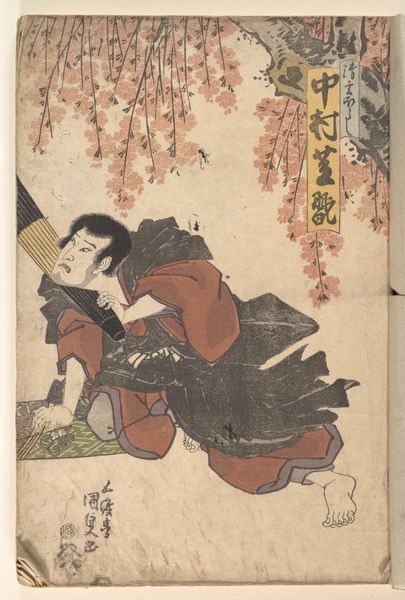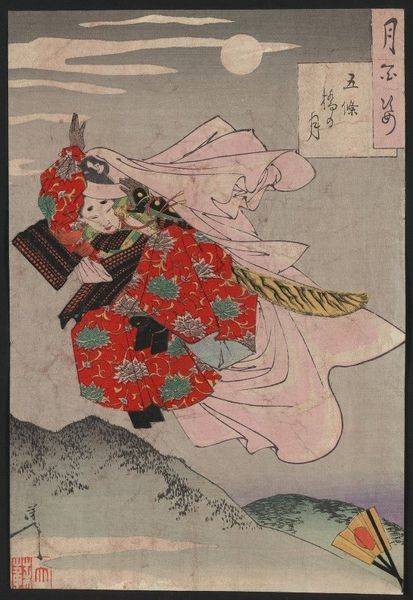
Copyright: Public Domain: Artvee
Editor: This drawing, titled "Urashima Tarō Returning on the Turtle," was created by Tsukioka Yoshitoshi in 1882, using watercolor and colored pencil. The turtle’s tail feathers are unexpectedly dynamic! What’s your read on this piece? Curator: From a materialist perspective, it is interesting to note Yoshitoshi's integration of Western artistic materials such as watercolor and colored pencil within the established ukiyo-e tradition, a historically grounded, popularized artform involving woodblock prints. These choices point to specific economic and cultural forces in play during the Meiji era, as Japan opened up to global trade and Western influence, including access to different modes of production. How do you see that manifesting in the artwork's aesthetic? Editor: Well, the subject matter, Urashima Tarō, is a very Japanese folk tale, so in choosing this subject, do you think he wanted to make a statement? The tension between subject and material makes it hard for me to understand. Curator: Perhaps the tension isn't a flaw but the very essence of the artwork. Yoshitoshi, rather than purely imitating Western styles, might be commenting on the socio-economic disruptions caused by these outside influences in a rapidly modernizing Japan. Considering that prints were commercial objects accessible to a wide public, what narrative about access and consumption might he be weaving here? Editor: I hadn’t considered it from an economic angle, but now I see that even the choices of materials, readily available because of increased trade, influenced the message. He is depicting the return of a legend, possibly a more grounded legend that comes home riding a less mythical beast and perhaps Yoshitoshi is demonstrating with that return of that folk hero in a changed society? Curator: Exactly. So what can we infer by placing the artistic choice, subject, and context alongside one another? Editor: I guess that looking beyond the beauty of the artwork allows me to learn how even traditional stories are always open to reinterpretation when viewed through the lens of evolving material conditions.
Comments
No comments
Be the first to comment and join the conversation on the ultimate creative platform.
